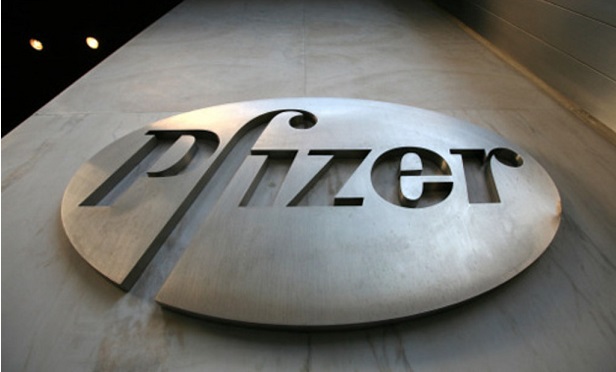 The latest move follows Pfizer's decision in December to separate its consumer-health business in a joint venture with GlaxoSmithKline. (Photo: AP)
The latest move follows Pfizer's decision in December to separate its consumer-health business in a joint venture with GlaxoSmithKline. (Photo: AP)
Pharmaceutical behemoth Pfizer Inc. has transformed itself under new leadership through a series of spinouts and joint ventures, mitigating risk by placing some units at arm's length while continuing to reap rewards from them.
Chief Executive Officer Albert Bourla, 57, who took the helm in January after serving as the drugmaker's operations chief, has rapidly transformed the company through a new deal-making strategy. His next major step is a plan to combine Pfizer's less-lucrative off-patent drug business with Mylan NV to form a generic-drug giant.
Related: Drugmakers AbbVie and Allergan strike $63M merger deal
Bourla envisions Pfizer as a smaller, more nimble company focused on innovative medicines and vaccines, unburdened by businesses with little or no innovation potential. He's intent on making Pfizer a stronger competitor for new cancer therapies. In June, Pfizer agreed to buy Array BioPharma Inc., a biotechnology company with oncology drugs and experimental therapies, for $11.4 billion.
To clear the way, Bourla's new plan would combine Pfizer's off-patent drug business Upjohn — the maker of widely used medications including Lipitor for cholesterol, Viagra for male impotence and Xanax for anxiety — with Mylan. In the potential stock deal, Mylan investors would get 40 percent of the company and Pfizer investors would get the remainder, according to people familiar with the matter who asked not to be identified because the negotiations are private.
Mylan rose as much as 30 percent in trading before regular U.S. markets opened. The drugmaker's euro bonds rose 4.6 cents to a record high. Teva Pharmaceutical Industries Ltd., the world's biggest maker of generic drugs, gained as much as 3.9% in Israel, while rival Perrigo Co. added 1 percent in London. Pfizer shares fell 0.7 percent in pre-market trading.
Teva, Perrigo and other makers of generic drugs have been under pressure from falling U.S. prices. Questions have swirled around Novartis AG's Sandoz generic unit: the company last year agreed to sell parts of the business in the U.S. and said in May that it would cut as many as 900 jobs at the concern.
New York-based Pfizer is getting Mylan at a significant discount to its heyday: The generic drugmaker's stock has lost three-quarters of its value since 2015 as the generics market struggles with price erosion and sales slump in North America. Its stock-market value as of July 26 was $9.5 billion, dwarfed by Pfizer's $240 billion.
Michael Goettler, who runs Pfizer's off-patent drug unit, would become CEO of the combined company, and Mylan Chairman Robert Coury would be executive chairman, the people said. Current Mylan CEO Heather Bresch would depart. Mylan President Rajiv Malik, who faces civil suits accusing him of taking part in an alleged price-fixing scheme, would ultimately leave the combined company, one of the people said. Mylan is run from Canonsburg, Pennsylvania, with a legal address in England.
The merger would allow Pfizer to move an obsolete business off the balance sheet while still generating multimillion-dollar cashflows to subsidize its ever-growing pipeline. The combined company will grant the off-patent legacy drugs a larger platform with global reach.
Off-patent drugs
Future sales growth for Pfizer's off-patent drugs is heavily dependent on emerging markets in China and Asia, Bourla said at a conference in January. “This is a very predictable business. It's low-risk, high cash-flow business,” he said. Mylan's Bresch has also said that China offers her generic drugmaker an outlet.
This isn't Pfizer's only recent spinout. In December, as Bourla transitioned into his new role, the company decided to separate its consumer-health business in a joint venture with GlaxoSmithKline Plc that combines products ranging from Sensodyne toothpaste to Advil. The deal allowed Pfizer to exit a business after a yearlong sale process failed to find a buyer, and focus on its pharmaceutical operations.
Bourla has said he is looking to accelerate Pfizer's growth potential rather than deliver immediate value to shareholders. The new strategy is a departure from former CEO Ian Read's wide-reaching approach to deals with near-term paydays.
Read spearheaded acquisitions of Hospira Inc. and Medivation Inc. Many other attempts to remake the drugmaker were thwarted, though. Pfizer failed in separate $100-billion-plus attempts to acquire AstraZeneca Plc and Allergan Plc. Read also proposed, then pulled back on, a breakup of the company.
“Our dogma until a few years back was revenues now or soon when we're looking at business development opportunities – that was our bias,” Bourla said in January. “Right now, I think this is not what we will need.”
© Touchpoint Markets, All Rights Reserved. Request academic re-use from www.copyright.com. All other uses, submit a request to [email protected]. For more inforrmation visit Asset & Logo Licensing.






